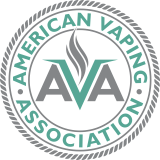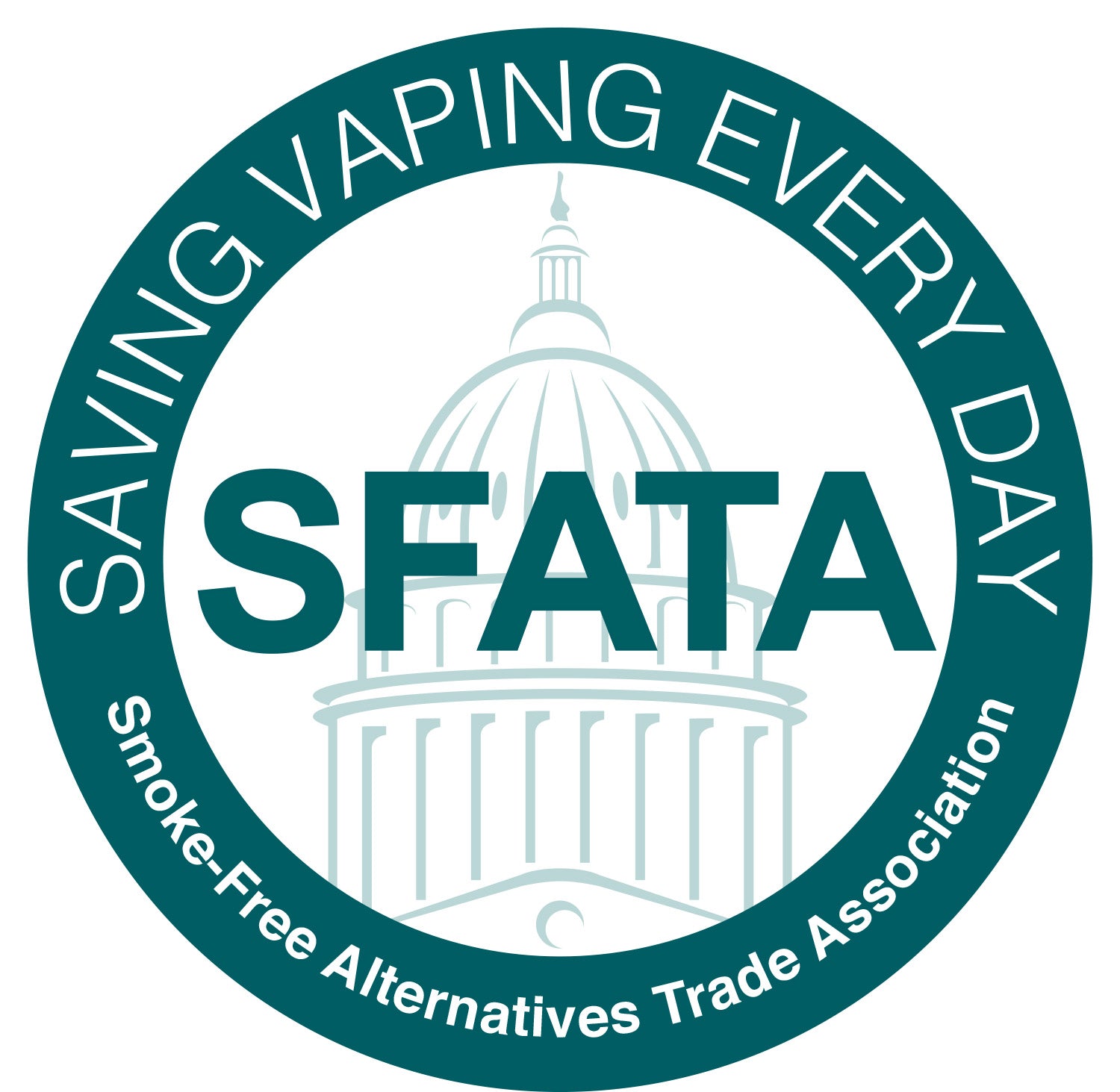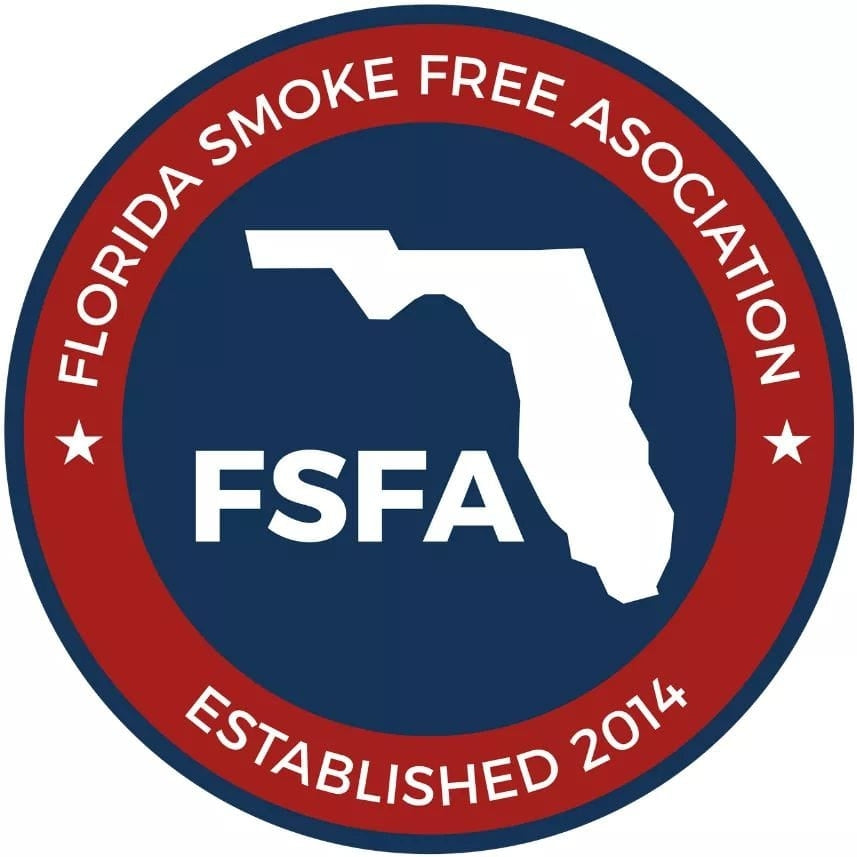There's been a trend happening in policymaking over the last 60 or so years. Basically it follows this thought process: if I, or my organization can afford it, we can send money to the decision makers for favorable results. Some would call this corruption, others would call this competitor's advantage - we're going to call it by the textbook term: lobbying.
Lobbying in the world of tobacco control isn't a new thing. When cigarette companies were defending itself from hooking a generation of Americans into a life of health problems from its products, anti-smoking groups such as the Truth Initiative lobbied the FDA and state governments into passing the Tobacco Master Settlement Agreement.
Now you're probably asking - "BLVK, why is this important? Since when do we care what Big Tobacco did?" Despite all this money being thrown around, the FDA never fully took away people's rights to use cigarettes knowing full well the consequences would bring upon the American public. All this goes to show is that money DEFINITELY influences policy and looking at what happened a mere 30 years ago tells a haunting story for what is to come for our vaping industry.
If you have been vaping for any amount of time, chances are, you are well-aware of two facts: 1) nicotine vaping products are an arguably better alternative to smoking cigarettes; and 2) regardless of whether the first point is accurate, the entire world seems to be fully against you using these products.
This whole reefer madness-esque negative publicity is the sole result of the Anti-Vaping Movement, and three liberal nonprofits that claim to be devoted to science and public health, bankrolling it.
E-Cigarettes and its respective products are legal in the United States and under the jurisdiction of the FDA. The FDA's sole job is to regulate these products (and are failing terribly at it). So while the agency goes and tries to do its thing, we as brand manufactures and consumers of these products are often left to react to the various restrictions put in place for a fully legal product. WHY?!
Why do entire organizations exist to literally advocate for the destruction of otherwise legal products? We're here to shed some light on the Anti-Vaping Movement in today's article. So let's dive right in.

- Freebase E-Liquid Products -

- Closed System Disposable ENDS -

- Nicotine Salt E-Liquid Products -
WHAT IS THE ANTI-VAPING MOVEMENT?
"Tobacco and vaping are destructive to the environment and we deserve to shape a world free from their toxins." - The Truth Initiative
"...We deserve healthy lives, lower healthcare costs, tobacco-free communities, and an environment free of the tobacco industry's toxic waste. And kids should grow up without the tobacco industry poisoning their childhood." - UNDO (authored by the Campaign for Tobacco-Free Kids)
"Our goal: Educate youth about the dangers of e-cigarette use. The campaign addresses the "cost-free" mentality in middle and high schoolers with messages that educate youth that using e-cigarettes puts them at risk for addiction and other health consequences." - The Real Cost Campaign (authored by the FDA)
All of these mission statements are by the major power players within the U.S. Anti-Vaping Movement. The anti-vaping movement is a collective of nonprofit organizations, public health groups, government-funded institutions, and as of the last few years, entire local and state governments all designed to educate mainly minors who are legally not allowed to purchase vaping products, the dangers of buying and using them. Each and every one of these organizations employ fear-based marketing tactics, media sensationalism, and heavily biased scientific studies to effectively control the narrative about the efficacy of these products.
In other words, they fully weaponize disinformation to influence the American public and beyond with devastating results.
WHO FUNDS THE MOVEMENT?
If all these organizations exist to educate through fear, how would something like this be funded? Easy. Non-governmental organizations! Like any NGO, they exist to fund various nonprofit campaigns in favor of shifting influence for or against an idea as it pertains to improving the lives of people. In the case of the Anti-Vaping Movement, these NGOs fund the various public service campaigns to slam the existence of vaping to help push a tobacco-free agenda.
The Anti-Vaping Movement is funded by three wealthy foundations: the Robert Wood Johnson Foundation, Bloomberg Philanthropies, and the Bill & Melinda Gates foundation. These are huge organizations in which two of them are headed by multi-billionaires Michael Bloomberg and Bill Gates respectively, and the third having a major stake in big pharma's version of the smoking cessation product Nicorette by Johnson & Johnson. Clearly, there is a major incentive to stamp out something as troublesome as the vaping industry, right?
So, how much are we talking here?
The American Vapor Manufacturer's Association went and pulled the numbers for us.
Just looking at Bloomberg Philanthropies and the Bill and Melinda Gates Foundation alone, they've spent over $100 million dollars since 2017 on grants, research, and other nonprofits to produce the heavily biased studies and other evidence that support the total eradication of nicotine vaping products. The Robert Wood Johnson Foundation has to a lesser degree helped fund this movement as well, injecting just about $20 million dollars during the same timeframe.
So you're telling me that all it takes to influence public opinion is about $100 million dollars and you can wipe out an entire industry of products with the sole aim of giving adults a choice in how they want to consume nicotine?
HOW ARE THE FUNDS USED?
Looking at the three NGOs and the nearly $150 million dollars being funneled out, who gets the $$$?
Well, you have your anti-vaping organizations such as the Campaign for Tobacco-Free Kids (CTFK), the Truth Initiative, and the Parents Against Vaping E-Cigarettes (PAVE). Then you also have your public health institutions such as the World Health Organization (WHO), CDC Foundation, Public Health Law Center, American Heart Association, American Cancer Society, and the American Lung Association (to name a few). Oh, and let's not forget the research universities to go and conduct all these studies! There's the University of Washington, the University of Illinois, University of California San Francisco, Brown University, and Duke University (again, there are more worldwide).
Are you noticing a trend here? All this money is being used to create and control a narrative where public enemy number one is vaping and all actors that contribute to its industry are bad.
Just looking at the CTFK, they've received an upwards of $60 million dollars from Bloomberg alone. And with that funding, they've called for the total eradication of all flavored vaping products - and have all but pulled it off.
Your typical anti-vaping campaign looks like this:
- One of the NGOs sends funding to an anti-vaping group
- The anti-vaping group creates a campaign that follows the narrative of the NGO - typically smoking and vaping are bad and here's why
- Research universities are paid by the NGOs to go and create sensationalist studies effectively proving that vaping is just as bad for you as cigarettes by using the worst and illogical methods possible
- Using the data generated by the universities, public health institutions publish the findings and the media freaks out and by extension, the American public freaks out
- The state and local government enacts ever-restrictive policies controlling people's access to vaping products based entirely on faulty logic and heavily skewed data
WHAT IS THE IMPACT OF ANTI-VAPING MEDIA?
As we mentioned above, the process in which an anti-vaping campaign is on-par with pushing out a public service campaign of any sort.
Generate the idea, pay off whatever actors required to prove your narrative, then leverage the fact that this is a public-service announcement to secure all avenues of advertisement.
Your typical anti-vaping campaign is blasted by mainstream media, on every single bus stop, billboard, Youtube ad, tv ad, radio station commercial, you name it.
What is the impact? Well, the National Library of Medicine (NCBI) published a study detailing the true impact targeted towards the actual, intended recipients of vaping products: current adult smokers. Findings indicate that it's a wash. There's an equal amount of people that are dissuaded from using the products and feeling the urge to continue to use these products. Ultimately, those that kick their vaping habit are often forced to go back to cigarettes. How would that contribute to the betterment of public health?
This is just on the surface level for Americans. How would something like this play out in say, the Philippines?

According to the media in the Philippines, Bloomberg Philanthropies was caught meddling in a foreign government's public health policy to support the implementation of the National Tobacco Control Program (NTCP). The NGO gave a grant to both the Philippine FDA and the WHO to effectively control the narrative and push an agenda that favors special interest companies over the people. If it hasn't already pulled up the red flags - accepting funding from a foreign NGO to influence public policies is illegal under Philippine law (and most other country's laws as well).
Not only that, but lower- to middle-income countries that do not have the infrastructure to have their own public health institutions rely on the global health organizations such as the WHO to shape its public health policies. If the WHO exists to support a global health order, is it not an unbiased actor to receive funding from such a prohibitionist type of NGO? Is this not a conflict of interest here?
By the end of it all, we have the Philippines, a country with one of the highest smoking mortality rates running a tobacco control program funded by foreign interests and a population that continues to suffer because there aren't any effective alternatives available to its ailing users. Nice one.
WHAT the anti-vaping movement getS WRONG?
When you have large-scale NGOs funding tobacco control groups, public health institutions, and universities to control a narrative that restricts innovation through fear and quasi-logic, you have yourself a society with an ever-increasingly risky problem that will never be fixed. Here's what the Anti-Vaping Movement seems to consistently get wrong about vaping.
Note - we're neither healthcare professionals, nor are we public policy experts. We're simply users of nicotine vape products with passion for research and calling irresponsible actors out for their BS. We are sick and tired of having to deal with decisions being made against our favor that are entirely rooted in poor logic and comes at the cost of millions of people suffering from it.
1. ANTI-VAPING GROUPS DO NOT DISTINGUISH BETWEEN SMOKING HARM AND VAPING HARM
In the WHO's 8th Report on the global tobacco epidemic published in July of this year, it emphasizes the "addictiveness" of nicotine when speaking about the harm e-cigarettes bring to its users.
When you smoke cigarettes you are consuming nicotine, carbon monoxide, tar, and thousands of other known carcinogens that will bring you bodily harm one way or another. These toxic byproducts of combusting tobacco leaves are responsible for smoking-related death and disease. But when you vape an electronic cigarette, you will be consuming nicotine and nicotine only. While nicotine is a highly addictive chemical, the compound itself doesn't do much to you in the same fashion that smoking would. Nicotine would raise your blood pressure and increase your adrenaline, keeping you relatively hyper and alert. That's about it. But okay tobacco control groups, let's put the entirety of the harm factor of tobacco products squarely on nicotine.
Professor John Britton, Emeritus Professor of Epidemiology at the University of Nottingham and special advisor to the Royal College of Physicians on Tobacco summed up the WHO's stance on tobacco control perfectly. He said "this report demonstrates that, sadly, the WHO still doesn't understand the fundamental difference between addiction to tobacco smoking, which kills millions of people every year, and addiction to nicotine, which doesn't."
Remember, the WHO is a powerful enough organization to have entire countries base its public health standards on its word. And yet the organization has such a narrow-minded and a quite frankly, dumb way of looking at tobacco control role in people's lives. Public health messaging should be clear in doubling down on the dangers smoking cigarettes poses to health, while simultaneously encouraging the fact that there are products out there that specifically DO NOT contain the risk factors smoking possesses. It should scare you that the majority of the public health community associates the dangers of smoking with nicotine, not the thousands of carcinogens that can actually kill you.

2. TOBACCO CONTROL NGOS GET IT WRONG TOO
Bloomberg Philanthropies, chief financier for the majority of the Smoking is Bad but Vaping is Worse ideology places the rise of e-cigarette products on the wrong actors: Big Tobacco. They effectively pool e-cigarettes, once again, in the same pool as cigarettes.
This is absurd. Look at all your favorite vaping companies and e-liquid brands, BLVK included. The majority of us started our respective brands to get as far away from cigarettes as possible. And in the process, to still get our nicotine fix without the the enormous bill of healthcare costs later in life.
The fact that an industry entirely founded and pushed to super-stardom by independent small businesses is being pooled into the big bad Big Tobacco industry is irresponsible because it once again sends the wrong message to users that are hooked on cigarettes. It's just as bad as cigarettes, so why switch? This is irresponsible and shame on you for both your arrogance and intentional ignorance.
3. THE STUDIES AIMED AT DISPROVING VAPING'S EFFICACY are ROOTED IN IDIOCY
This point falls into more of what the first point is aiming for. The studies that are coming out by research universities and pushed by public health institutions like the WHO and the various American Cancer/Lung societies consist of cherry-picked data to further push the narrative that lower-harm tobacco alternatives such as vaping isn't a wise decision to make for yourself.
If you were to google "is vaping safe" the very first article you are given is a John Hopkins Medicine piece effectively saying that vaping is less harmful than smoking but it's still not safe. And looking at all the supporting studies proving the points, not only are the studies themselves funded by these anti-smoking/vaping NGOs, but the data creates unrealistic conditions to effectively guarantee that there are risks associated with these products. For example, the very first point supporting that vaping is not safe is the mention of the e-cigarette or vaping use-associated lung injury (EVALI) which was the time that 68 people died from inhaling Vitamin E Acetate found in counterfeit THC vape cartridges.
Now why would black market THC products be used to shun out nicotine vape products? Well, because it sells the idea that ALL vapes are bad. If harm can be brought over from another type of product, surely we can make the connotation that nicotine vapes will do the same to you, right? In fact, to this day, the WHO places the blame of the EVALI outbreak squarely on nicotine e-liquid brands. Which would explain why brands like BLVK and others have to deal with flavored vape bans all over the world. Thanks for that.
BUT WAIT...THERE'S MORE!
Going back to studies that leverage unrealistic usage conditions to effectively control the anti-vaping narrative, another quick google search like "is there a secondhand vapor risk" shows even more laughable idiocy (if you're into dark humor).
The very first page you're given is a piece by the American Heart Association, another benefactor of Bloomberg Philanthropies through the Campaign for Tobacco-Free Kids. The AHA argues that secondhand nicotine vapor is associated with "increased risk of bronchitis symptoms and shortness of breath among young adults."
So you mean to tell me that if I hit my Grapple Ice Ello Disposable and exhale the vapor and my friend is next to me, they will develop bronchitis? Interesting. Looking at the supporting study, and really, read the thing - you'll see how idiotic the conditions had to be to get to that conclusion.
The study, which predictably concludes secondhand nicotine vapor causes physical harm states "many study participates with secondhand nicotine vape exposure were also exposed to a variety of other tobacco and cannabis products." Well gee whiz, don't you think the secondhand cigarette and cannabis smoke would throw off that data a bit? But okay, let's just pretend that line of text doesn't exist in the study and push it out as nicotine vapor is bad. They won't notice.

4. WHEN TEEN VAPING RISES, THE ADULT USE MARKET PAYS THE ULTIMATE PRICE
Let's be real, when you were a kid, adults smoking cigarettes was the coolest thing! While cigarette marketing was a problem that has since been addressed, the same is playing out in this day and age with e-cigarettes. You, as an adult, are vaping e-cigarettes and the next generation sees this as "oh cool! Vapes are cool and I want to try!"
More than likely, the e-liquids you are vaping are flavored because the flavors are drastically different in taste and experience from tobacco cigarettes. The flavors present you with more of a disconnect during your transition away from the analogs. In fact, a 2021 study published by the National Library of Medicine (NIH) concludes that very fact. Flavors are more effective for quitting cigarettes to the tune of 2-3 times more effective than other smoking cessation methods.
How do the anti-vaping groups view that study? The Campaign for Tobacco-Free Kids argues "We know that e-cigarettes companies have infused their products with thousands of kid friendly flavors, which are chosen by an overwhelming majority of kids who use e-cigarettes. We know that tobacco companies have spent billions of dollars to create, distribute and advertise e-cigarette products in a 'patently youth oriented' manner."
A lot to unpack here. Following the complete and total stupidity of assuming that a nicotine salt e-liquid containing 50 milligrams nicotine that would otherwise require an adult of age to present their driver's license or ID to purchase it; with the attached strawberry cheesecake flavor that you'd find in our Creamy Strawberry e-liquid blend is assumed to be something only a kid would like. Excuse me? Last we checked, it's the adult smokers that are buying these products and it's the same adult smokers that are using these products that continue to fuel the survival of the industry. And it's all humans, regardless of age, that like a strawberry cheesecake. To assume that any flavor that is not explicitly tobacco is a youth-oriented product is ludicrous.
If I am of age to consume tobacco products, and I am already a user of it, I will vape on whatever flavor I want. Whether that's a fruit and menthol blend, a bold dessert, or even a lollipop smothered in some other ultra-sweet candy-like, ice cream blend. It's my body, my choice!
It's already hard enough for an underage minor to acquire these products. All retailers both online and in-person require you to present identification prior to purchase. And not, it's not even an enter your birthdate to get around it - no, you'd need to physically upload a photo of the ID and in most cases, take a picture of yourself holding that ID so an algorithm can match you up with existing databases of your personal information. On top of that, on the B2B side, e-liquid manufacturers often enter into restrictive deals with their distributors and retailers to ensure that such an occurrence never happens. Should an underaged sale occur, the manufacturer ceases business with the offender immediately, thus lowering their own market share, voluntarily, just to protect the industry at large.
What more does the e-cigarette industry have to comply with to ensure that kids never get their hands on its products? Not allow adults to have them to begin with? Take it from us and see what happens.
VAPING IS AN EFFECTIVE ALTERNATIVE PERIOD.

Whether you live in the United States or a faraway country like the Philippines, there are over 1 billion people that smoke. And 8 million of which die every single year as a result of it. Whatever the global health community is doing to address the issue - to the tune of restrictive taxes, bans, and stigma clearly isn't working.
Today, there are safer and more-innovative nicotine products such as e-cigarettes, ultra-low harm snus, and heat-not-burn products that are otherwise disrupting the traditional tobacco industry and there is a growing list of reputable scientific, public health, and government organizations out there that are NOT funded by special interest anti-vaping control groups to paint a very narrow-minded narrative. The overall messaging is loud and clear that nicotine vape products are the better alternative.
The International Network of Nicotine Consumer Organizations (INNCO) produced a dossier for which this blog was heavily referenced from. They list out what the next steps should be in waking up from the weaponized disinformation being fed to the public by special interest NGOs and anti-vaping groups. Their work goes onto the highlight the need for organizations like the WHO to continue to exist, but for its leadership to consist of INDEPENDENT researchers and users to guard against the bias and disinformation. The group also provides a resource detailing out every single unbiased outlet detailing out the true facts of tobacco harm reduction.
If you've been on the fence and wrestling whether the vapor products you consistently use are safe for you, here's your chance to do your own research. Read what the anti-vaping control groups are pushing. Then look at the other side of the arguments. Both are rooted in science, but there is a clear distinction between unbiased science and let me give you a million dollars for this type of answer type of science. You're an adult and fully capable of making an informed decision. Now that you have your resources, get to it!











Leave a comment
This site is protected by hCaptcha and the hCaptcha Privacy Policy and Terms of Service apply.